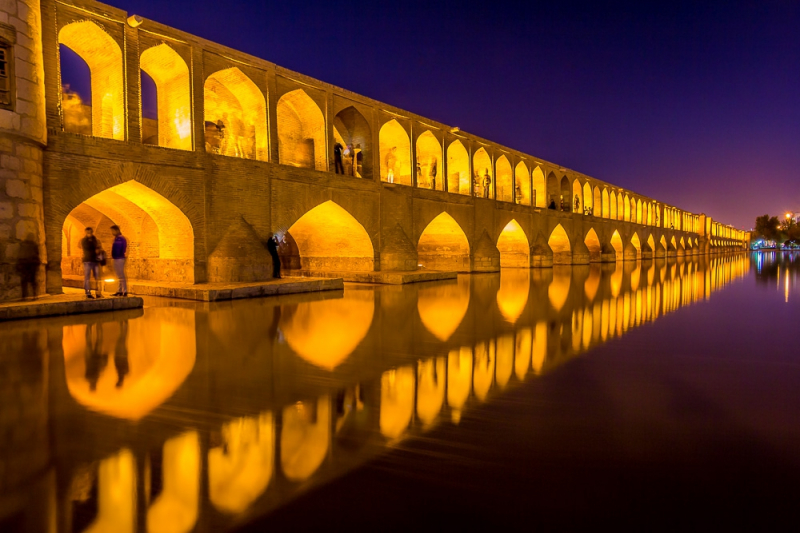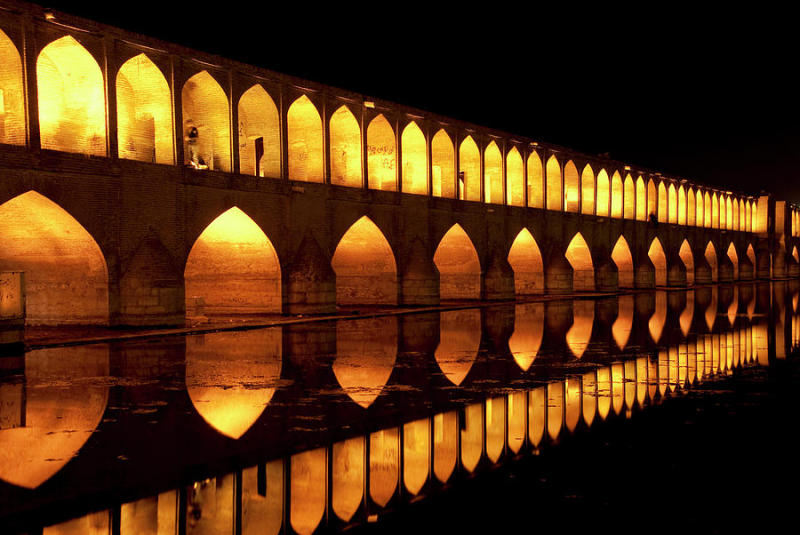Si-o-se-pol

In Isfahan, Iran, the Si-o-se-pol bridge and dam, also known as "The Bridge of 33 Arches," was once intended to be both. Si-o-se-pol, which was finished in the first half of the 17th century, is one of the best-preserved examples of bridge design from the Safavid period. Between 1599 and 1602, Si-o-se-pol, also known as the bridge of 33 Persian letters, was constructed in Iran during the rule of Abbas I, the fifth Safavid king (shah).
It was built under the direction of the chief military commander, Allahverdi Khan Undiladze, who was also named after him and was of Georgian descent. The bridge served as a vital connection to the city's important Armenian neighborhood of New Julfa as well as a link between the mansions of the elite. Yazd province received water from the river when there was a drought (2000–2002 and 2013).
However, as the lower sections of the river have nearly completely dried up owing to a variety of factors over the years, the bridge-cum-dam has evolved into a really lengthy heritage building. With shopping centers, lodging options, cafes, and other tourist attractions on either side, it is currently a well-liked recreation area.
- Total length: 297.76 metres (976.9 ft)
- Designer: Hussein Bana Isfahani
Rating: 4.6/5.0
Location: Isfahan Province, Isfahan، Enghelab Sq Chahar Bagh e Abbasi St، JMV8+QX8, Iran











